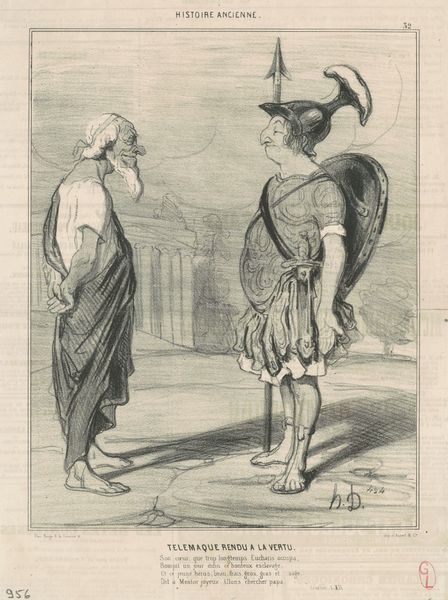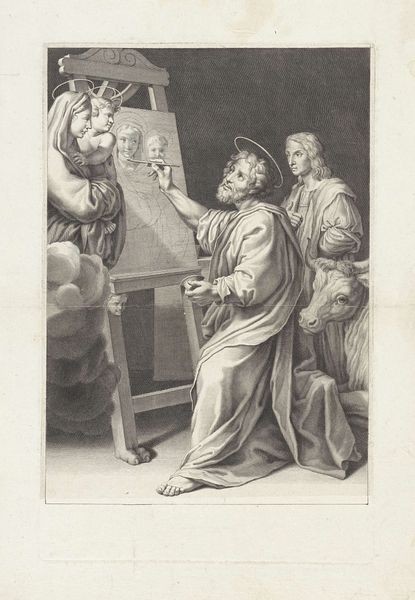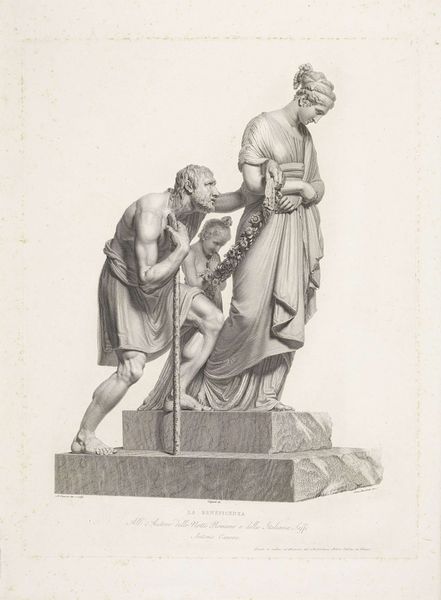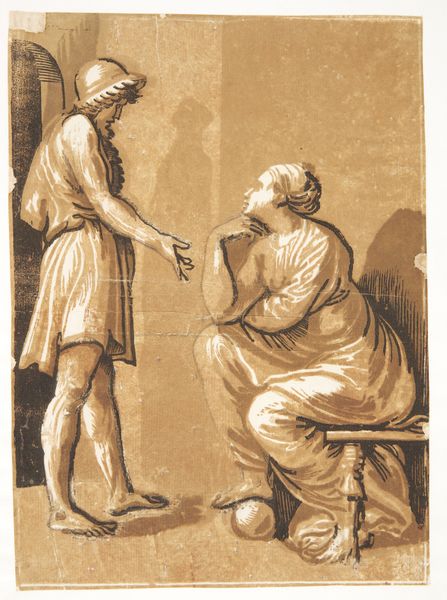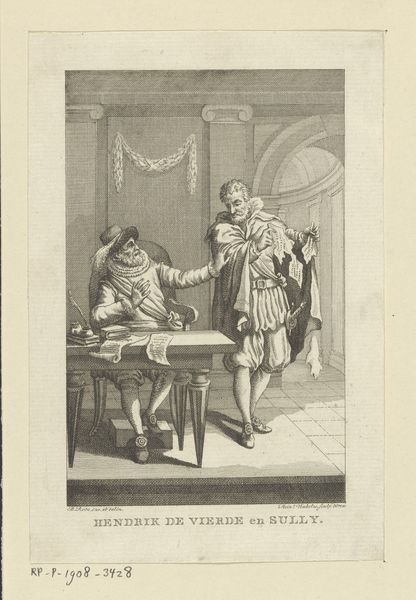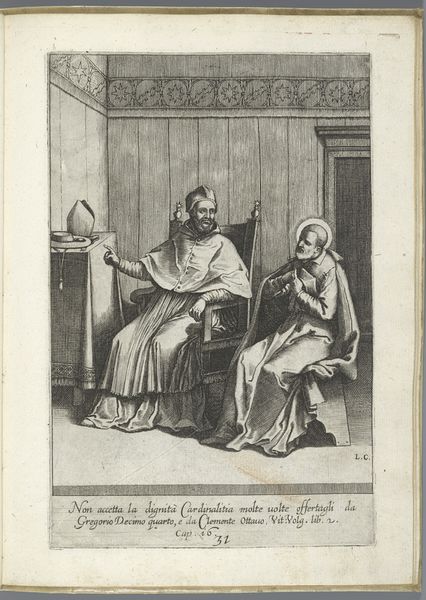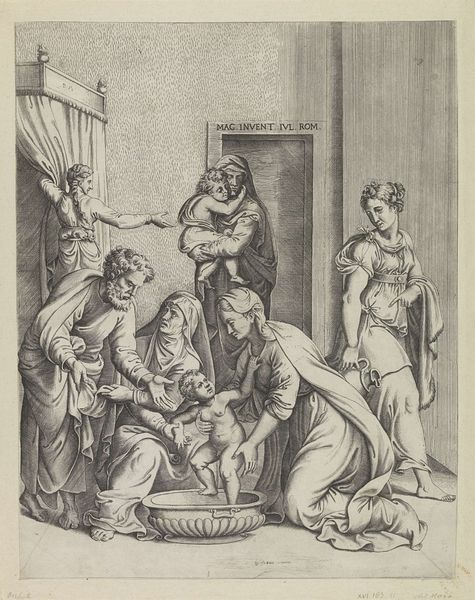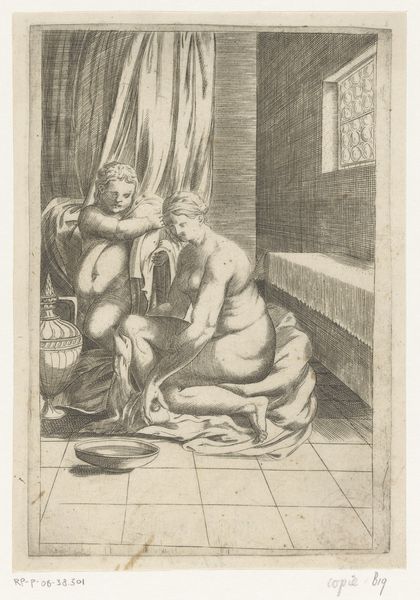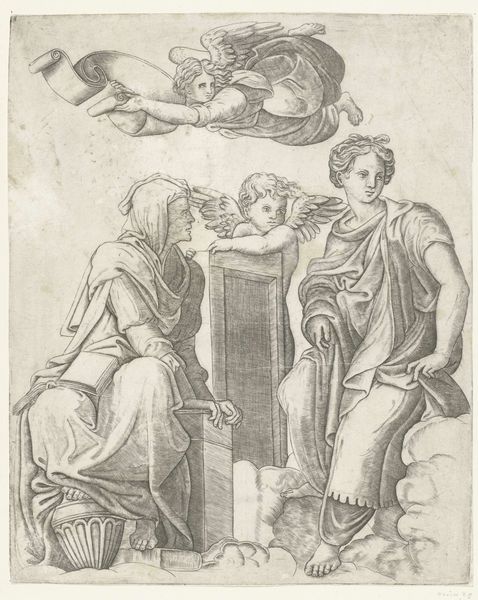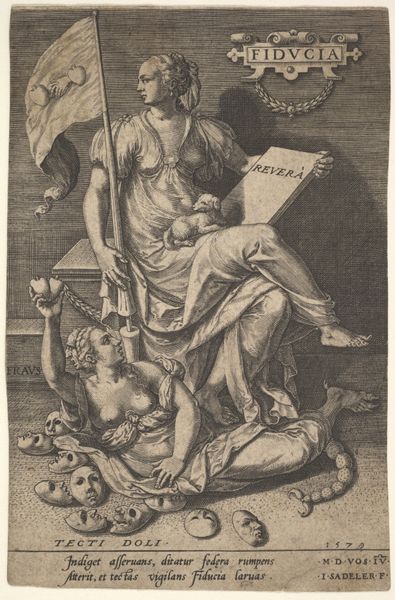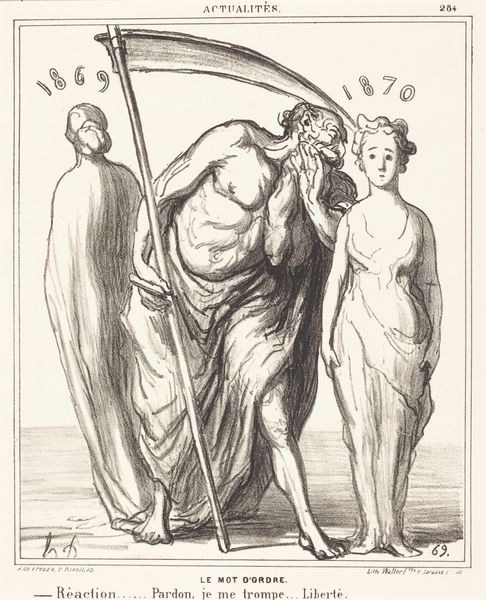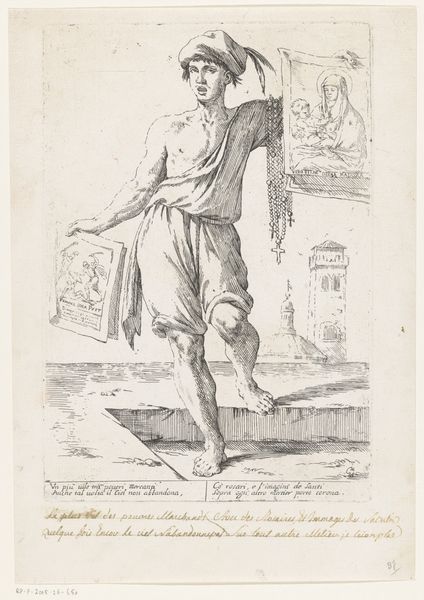
print, engraving
#
portrait
#
neoclacissism
# print
#
caricature
#
classical-realism
#
figuration
#
engraving
Dimensions: 276 mm (height) x 180 mm (width) (plademaal)
Editor: So, this is "Statuarius," an engraving made between 1796 and 1802. The artist is listed as M. W. Schmith. What a peculiar scene! It's like a commentary on the artistic process, with these strange figures seemingly interacting with a bust. What's your take on this work? Curator: I find this engraving fascinating when we consider the materiality of image-making at the time. Think about the labour involved in producing an engraving, the skill of the artisan, and the cultural context of printmaking as a means of disseminating ideas and satire. Editor: Satire? Curator: Yes. What does the imagery suggest to you in terms of the social commentary that is intended? Consider the materials and the processes mimicked within the work itself. We see sculpture, so we see another manufacturing process and perhaps hierarchies within the art world. Editor: Ah, I see! It’s not just a representation, but a comment on the hierarchy of art forms and the labour associated with them, contrasting sculpture with engraving, perhaps? The monkey mimicking the touch, and the donkey's head on the bust... Curator: Precisely. It invites us to think about skill, artistic production, and who gets to create "high art." Does the print challenge or reinforce those boundaries, and what is the significance of the printmaking process itself here? Editor: That’s such a good point. The availability of prints, how it democratized art to a degree, versus unique sculptures for the elite... So it makes one think about how art production and access were changing. Curator: And, of course, who controlled that access. Examining prints allows us to investigate production methods, workshop systems, and the economics of art and satire as commodities. This is how we might bring such apparently straightforward historical images into our own concerns. Editor: I hadn't considered that, focusing on the social context of the materials, and how this print acts as a commodity with its own statement. Curator: Indeed! It pushes beyond the aesthetics. I find thinking of the material conditions opens new understandings.
Comments
No comments
Be the first to comment and join the conversation on the ultimate creative platform.

